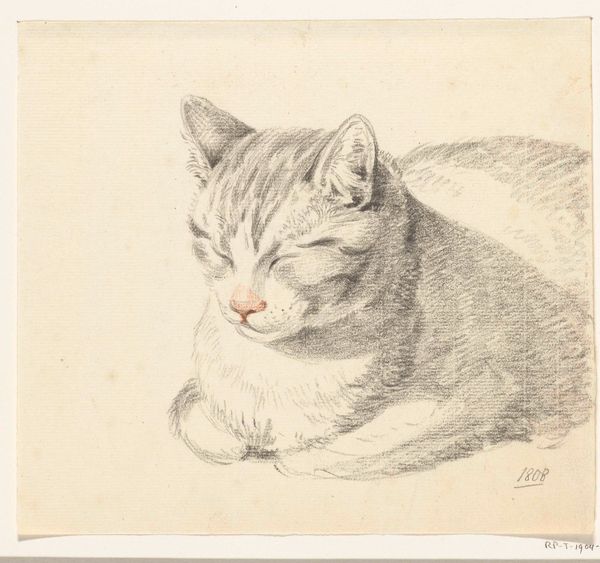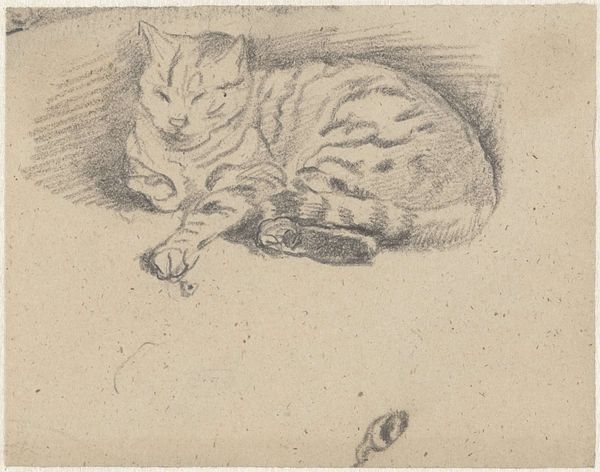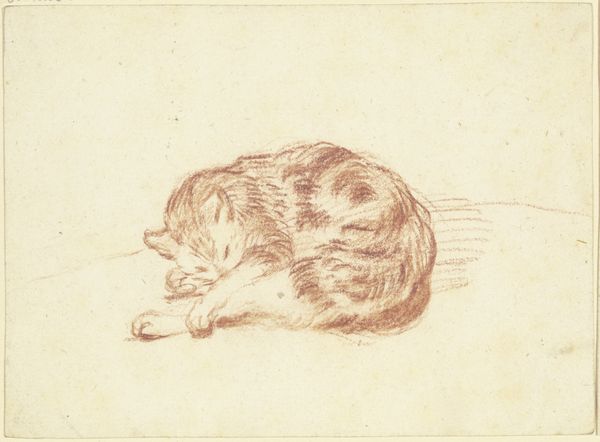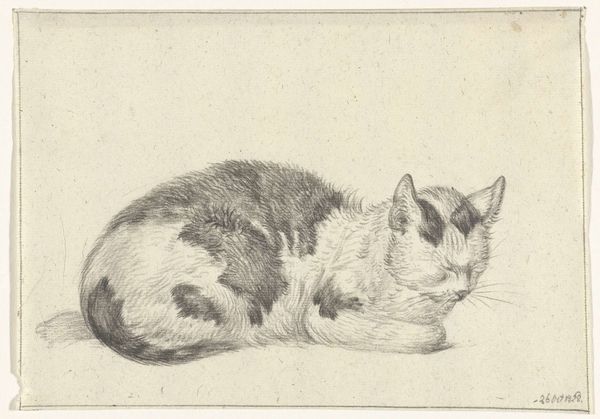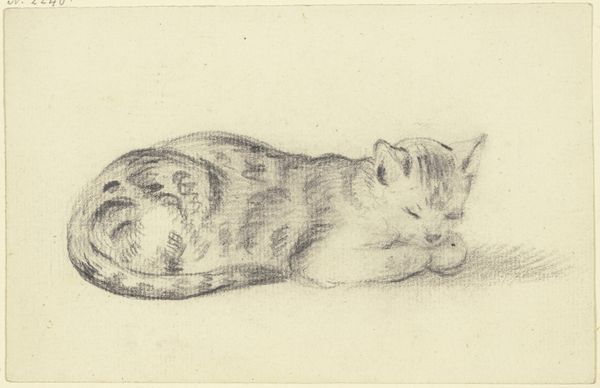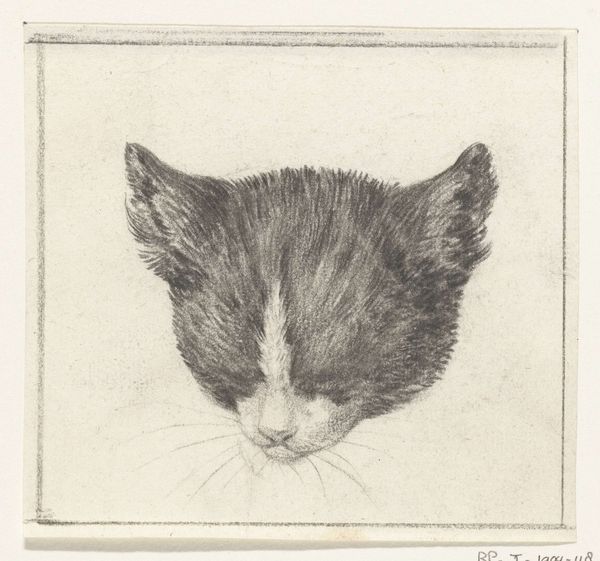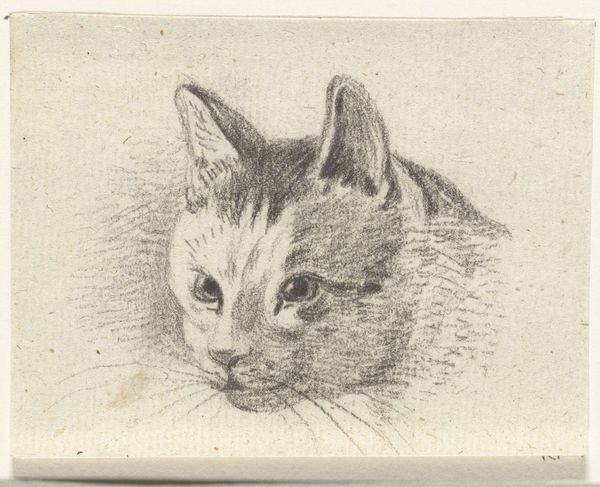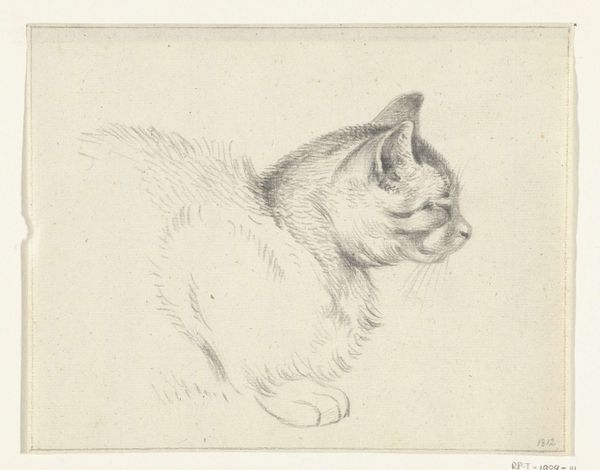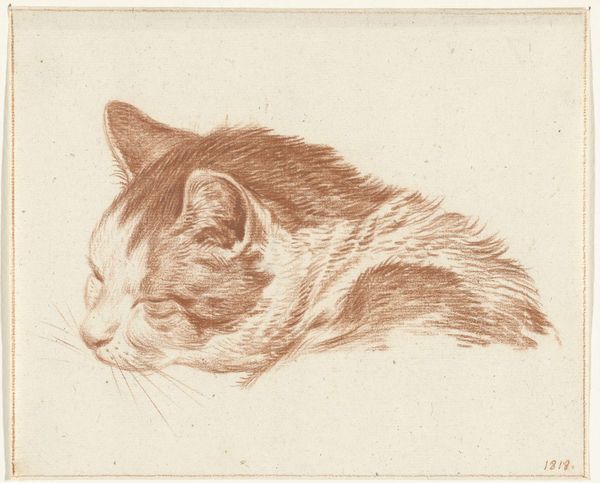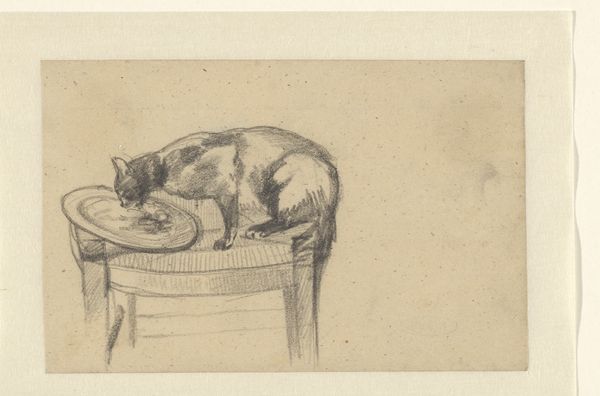
drawing, pencil
#
portrait
#
drawing
#
baroque
#
pencil
Dimensions: Sheet: 3 1/4 × 3 3/4 in. (8.3 × 9.6 cm)
Copyright: Public Domain
Curator: Ah, a perfectly captured moment of repose. Jan Miel created this work, titled "Study of a Sleeping Cat," sometime between 1619 and 1664. It’s a pencil drawing, currently residing here at the Metropolitan Museum of Art. Editor: It's lovely. There’s a real sense of peace emanating from it. You can almost hear the soft purrs. Cats often represent domesticity and comfort, of course, but there’s something else here... vulnerability, perhaps? Curator: Domesticity is key. The rising popularity of cats in Baroque art mirrored their increased presence in European households. Miel was primarily a painter, focusing on genre scenes, so this intimate study feels special precisely because it captures a simple, quotidian scene. The lack of grandeur typical for the period actually strengthens the image. Editor: That’s interesting – that it’s precisely not symbolic, but documentary. It is a very detailed cat, so realistically observed. But beyond its representational accuracy, it evokes feelings connected to sleep itself; safety, a return to innocence and lack of stress. Even the way the pencil is applied in the work evokes soft fur and a calming texture. Curator: The image certainly offers a different side to 17th century society than the typically bombastic and overtly moralistic paintings from that era. I think works like this remind us of what’s often left out of art history; everyday life, the comfort animals bring, the sheer delight in observation. These pencil studies would've been produced more privately. Editor: Exactly. The cat, here, transcends being merely a pet. In its relaxed posture and vulnerability, it becomes a symbol of life lived gently and contentedly, maybe offering us some refuge through contemplation. I think the direct observation makes for an incredibly universal image too. Curator: Yes, and it humanizes both the artist and the era, stripping away some of the heavy-handed propaganda one expects. Thanks for pointing out those potent undercurrents. It provides an alternative lens. Editor: The beauty lies in simplicity. I now better appreciate that an artist immortalizing the softness of a sleeping cat in lines etched on paper, centuries later, still stirs an awareness and desire to simply be calm.
Comments
No comments
Be the first to comment and join the conversation on the ultimate creative platform.
